7 Dog Training Terms You Need to Know to Start Training Your Pug
Taking your Pug to his first dog training class can be stressful. We all know that Pugs have a mind of their own. The likelihood of them “Dancing to their own beat” is high.
You don’t want to be that crazy Pug lady at dog training class giving your Pug smooches while everyone else is following along with the trainer.
Learn the following nine concepts before you get there to help you be one of the “cool kids.”
You and your Pug dog will be shaping and luring with the best of them. Before you know it, you’ll be walking up to get that first-place ribbon at the agility contest. Check out Cookie the Pug here.
Or maybe your Pug will just win first place for jumping on and off the couch! Either way, let’s learn the nine terms to start your dog training journey because Pugs are always #1!
# 1. Shaping
Shaping is the short version for “shaping by successive approximations.”
It means you will use a series of steps to teach your dog to do a new behavior. With each small step that your Pug completes, he gets reinforced. Reinforcement usually means praise and a small treat. Your Pug dog will feel successful when you break the actions into easier steps.
There are two ways to use shaping to teach a Pug dog a new trick. Those ways are luring and capturing in dog training.
a. Luring

Let’s say you’re going to teach your Pug to roll over. Teaching him to do this all at once would be difficult.
Pugs are small, so you could physically roll him over, but he would probably be confused and scared. “What the heck? I’m in the middle of a nap, and my Pug parent starts pushing me around!” Instead, he needs to be in control of his own body and do the task himself. That means increasing your Pug dog’s success rate by teaching one part at a time. Luring is a common dog training tactic to shape your Pug’s behavior.
Use this to teach your Pug to completely rolling over.
- · Start your Pug in a down position.
- · Move a treat from her nose to her back- shoulder area.
- · When her head follows the treat just a little, click and treat.
- · Slowly, one inch at a time, move the lure toward her shoulders. Click and treat each time she moves her head in the direction of the lure.
Continue many times to move the treat from her nose to her shoulder. Each time she is successful (and you click and treat), move the lure further from the shoulder area.
Treats are great things to use when dog training Pugs.
When I first taught Mimi and Lulu to roll over, they were pretty confused.
They already knew how to lie down and sit. It was tough getting them to stay down to start shaping the roll-over trick. They weren’t getting a treat for lying down, so they kept trying to sit. They were doing the only two things they already knew to get that treat.
Persistence is the key in Pug training, and they finally figured it out.
b. Capturing
Capturing is waiting for the behavior you would like to see. Capturing is part of the shaping process.
An Example of Capturing:
Dog training your Pug to lie on a blanket:
Number 1. You put the blanket on the floor. Your Pug ignores it, gets on the couch, and takes a nap.
Number 2. Okay, that didn’t work out the way you wanted. Take your Pug dog, the blanket, clicker, and treats into a smaller room. A smaller space will increase the chances he will pay attention to that blanket.
Number 3. Your Pug offers a sit, looks at you for a treat. Praise your Pug, but no treat. You are not looking for a sit.
Number 4. Eventually, he looks over at the blanket. You click (or say “yes”) and give him a treat.
Each time he looks at the blanket, moves toward or sniffs it, click and give him a treat.
Finally, he puts his paw on the blanket and gets a click and a big Jackpot with lots of praise! He stays there, but there is no movement.
Then he dips his head to smell the blanket. Again, click, and he gets a treat.
Each time he moves another paw on the blanket, click and another treat.
Finally, he puts all four paws on the blanket, and you click and give him a grand Jackpot!
Repeat several times until you believe he knows what you’re looking for.
Then add the verbal cue such as “Blanket,” “Place,” “Go to Bed,” or whatever you want to use on an on-going basis.
#2. The Premack Principle
The Premack Principle is a dog training principle, sometimes called “Grandma’s Law.” As a child, we had to eat what was on our plate. If we wanted dessert, we had to finish off all of our vegetables.
So, you got your dessert, and your parents made sure you were also getting healthy food. It was a win-win situation. You got your dessert, and your parents made sure you ate your vegetables.
I like the Premack Principle because it’s a win-win situation. It takes away the conflict between my Pugs and me. We both get something positive.
Let’s say you are taking your Pugs for a walk. They want to stop and smell every little thing they can find.
Soon the walk turns into a “Smellfest.” It takes you 30 minutes to move a stretch that should take about 5 minutes. Your Pugs are wandering around and stopping to smell everything. They get minimal physical exercise. There is a way to fulfill both desires. They want to smell, and you want them to get them to exercise. Let them stop and smell as a reward. After they have walked for a stretch, let them stop and smell the roses, but not the poop!
Going for a Walk using the Premack Principle
- Once out the front door, have your Pug dogs sit. This is a great way to start your dog training session.
- Start the walk by having your Pugs heel or walk on a loose leash, whatever you have trained them to do.
- Have them walk for long enough that you feel that they are getting some exercise.
- Use the “release” cue you. Releasing means they can do what they want. They can sniff or play around while still on the leash.
- After a few minutes, request that they sit at your side.
- · Say “let’s go” and start walking with your Pugs again at a pleasant rate.
- Once out the front door, have your Pug dogs sit. This is a great way to start your dog training session.
- Start the walk by having your Pugs heel or walk on a loose leash, whatever you have trained them to do.
- Have them walk for long enough that you feel that they are getting some exercise.
- Use the “release” cue you. Releasing means they can do what they want. They can sniff or play around while still on the leash.
- After a few minutes, request that they sit at your side.
- · Say “let’s go” and start walking with your Pugs again at a pleasant rate.
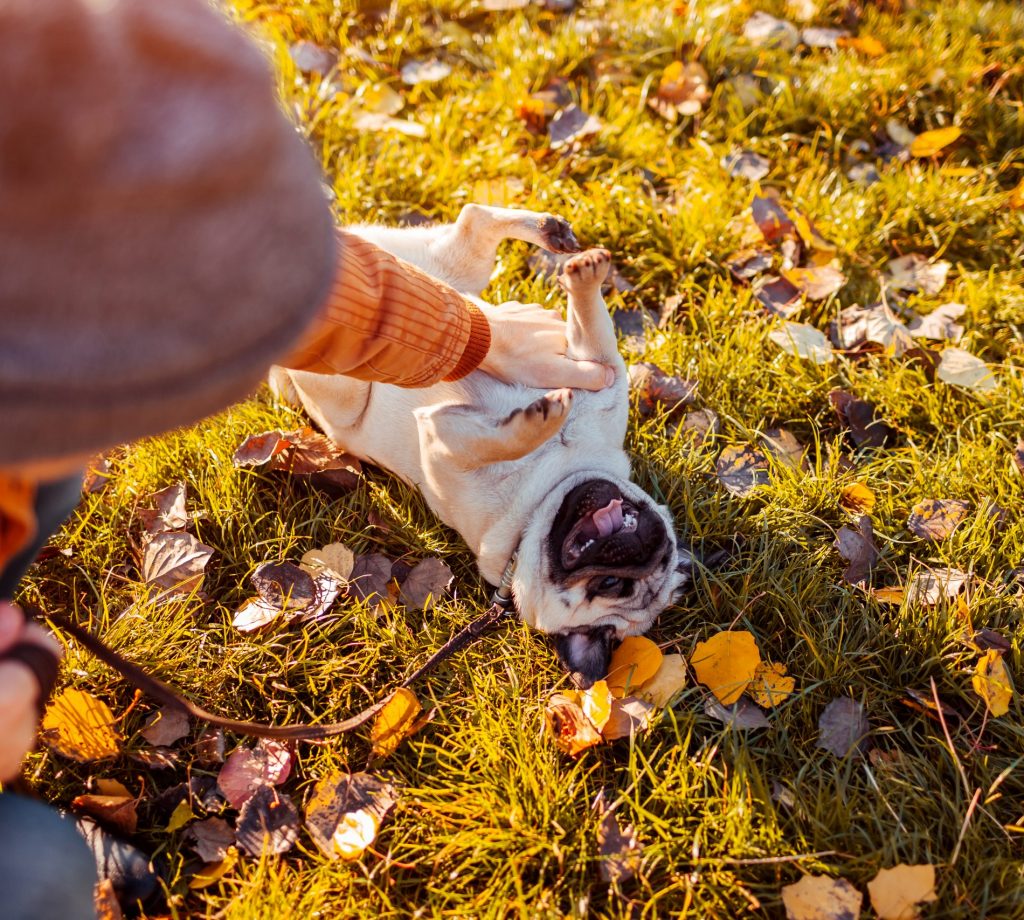
Curiosity is Not Bad Behavior
Some people might consider letting a dog do their own thing as “bad behavior.” This is their natural curiosity, and we don’t want to squash that. Yet, they do need exercise and not spend the entire time smelling.
With the Premack Principle dog training, your Pug will learn if they want to wander around and smell, they must first walk next to you for a decent stretch.
Everyone is happy. You feel like your Pug dogs got some exercise in, and they get to wander about and do their Pug dog thing.
#3. Extinction Dog Training
Extinction is a way of ending a behavior by removing the reinforcement. What? In other words, stop rewarding them for doing bad things. Let’s say your Pug barks at the door to go out. In the past, you have always reinforced this behavior by getting up and letting her outside.
One evening when you are reading, and she barks to go out. You want to finish the paragraph you’re reading and tell her in a very sweet voice, “Okay. I’ll be there in a sec.” You continue to read, and she barks again and again. Her bark gets more forceful, and suddenly, you’re on your feet, letting her out. Yes, we all become our Pugs door servants if we’re not careful.
You decide from now on; you are not going to let her out the door for barking. You decide you are going to start some serious dog training and will wait until she stops. She eventually stops; you praise her and let her out.
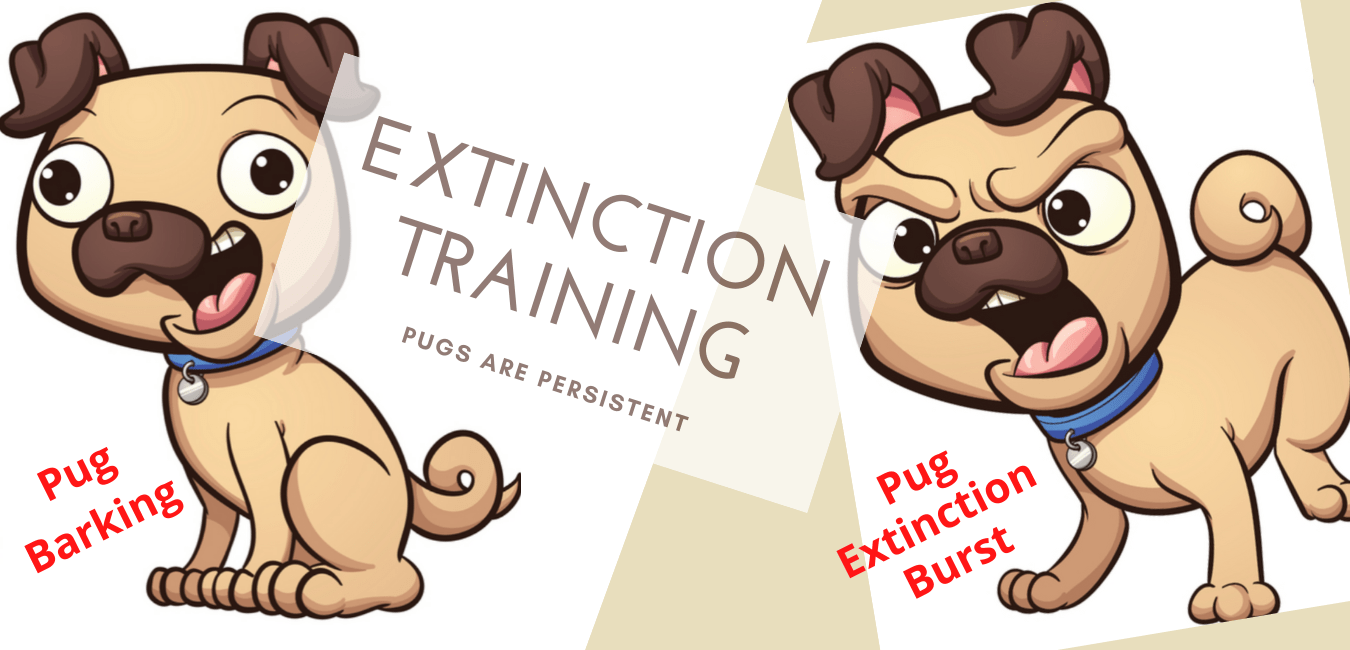
Extinction Burst
However, you notice in the upcoming days, the barking increases instead of decreases. This increased barking is called an extinction burst.
Your Pug decides he doesn’t like this kind of dog training. He feels he’s being ignored, and he makes a last-ditch effort to get your attention. Sometimes things have to get worse before they get better, even with dog training.
#4. Generalize
Have your Pug perform trained behaviors in different areas. This means the behavior is generalized. Let’s say you have trained your Pug to sit. He sits consistently sit every time you ask him to in the house.
But when you are in the backyard or out for a walk, he does not.
Maybe he’s busy doing his own thing, and he’s not used to sitting and dog training when he’s outside.
He has not generalized his sit behavior to being outside. Expand your dog training to other environments and situations.
Generalize your Pug dog’s behavior inside and outside. Make sure he can sit with or without a leash around distractions like barking dogs, cars going by, etc.
If you initially train your Pug dog to sit when she has her harness and leash on, she might not do so when it is off.
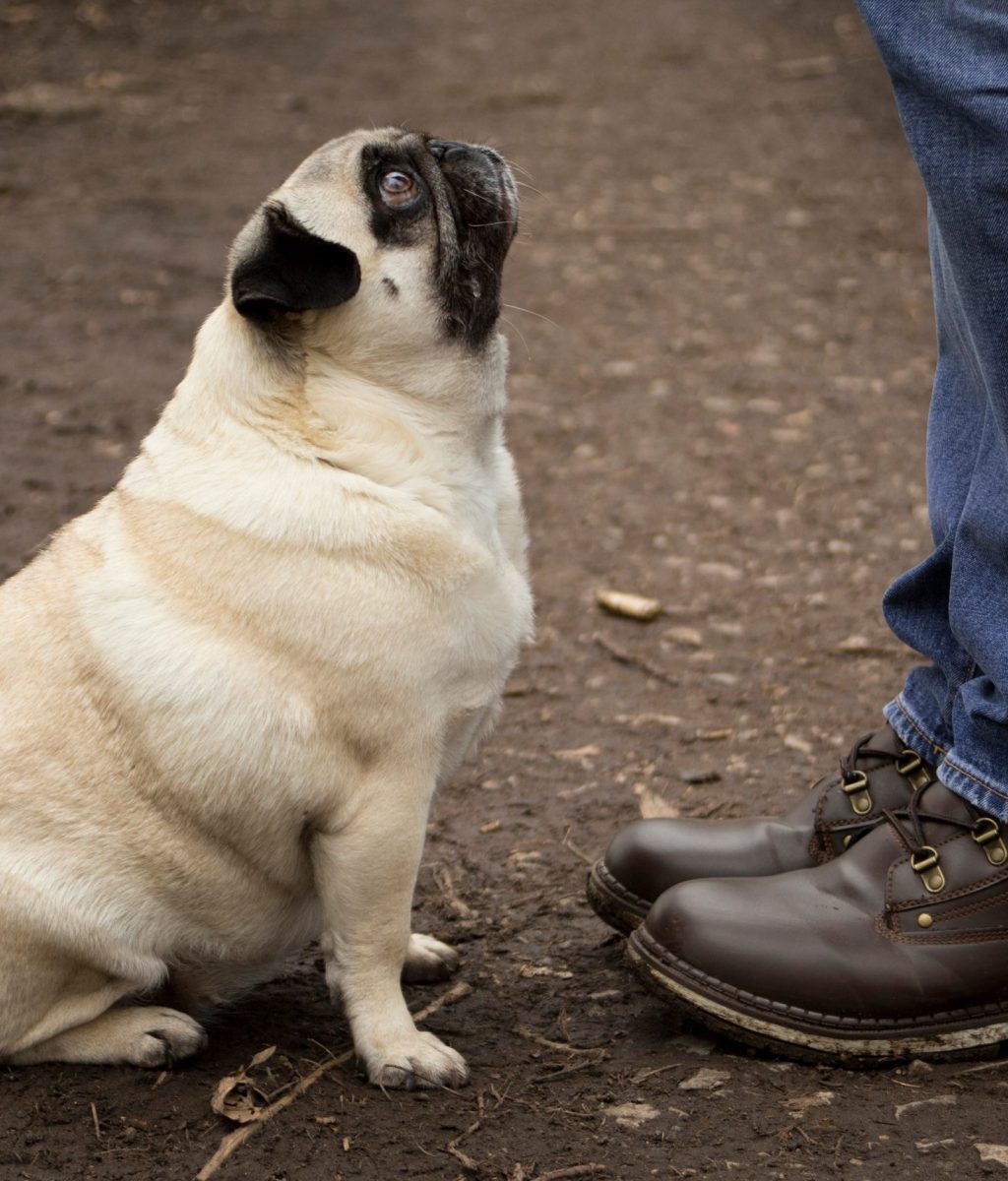
One of the first things I taught Mimi and Lulu was how to sit on their cots. When I got out their Pug dog’s collars and leashes, they ran to their cots and gave me the best “sit” they can muster. “Let the treats begin!”
I had to amp up their dog training. I had to teach Mimi and Lulu to sit in various settings and situations. I taught them to sit without their leashes and collars on their cots and floor. I trained them outside, on walks, and when there were distractions around like other dogs. For a while, we were doing a lot of dog training just on the sit command.
Sometimes dog training in a new situation seemed like starting all over again. Other times, they picked it up very quickly.
For this behavior to be practical in the real world, they had to learn to sit in all locations. They also had to learn to sit when dogs were walking by or cars were driving by.
It was of little value to sit on their training cots but not listen to me and sit when a car drove by. Teaching them to sit when cars or dogs go by is useful but can be more difficult.
#5. Correction
Correction is an action that stops or punishes a dog from doing unwanted behaviors. For example, a jerk on the leash is a form of correction. Simply put, Corrections are punishment.
Be Careful with Dog Trainers that use the term correction.
Some dog trainers still use punishment as a way of dog training. Instead of punishment, they use the word correction. Sometimes they will tell you they’re just “getting their attention.”
Descendants of Wolves?
This type of dog trainer may tell you that he is mimicking wolf packs in the wild. The mother or dominant wolf will flip the submissive wolf on her back. Or there is nipping to keep the young ones in line. Sometimes the nipping gets rough, maybe drawing blood in a wolf pack.
So, does that make it the right thing to do for our domestic dogs? Trainers can be very convincing, and you will start to believe it is okay; they are descendants of wolves.
Here are a few other things wolves do:
In the first 45 days of their pups’ lives, they regurgitate food from their stomachs to give to the puppies. This is for nutrition and bonding.
Adult wolves are known to kill pups in various situations.
You may want to ask the trainer, just because a wolf pack does something, is it a good idea for us to do it? I don’t know about you, but I have no desire to be an Alpha anything.
Even if dogs are descendants of wolves, I don’t see much wolf left in my Pugs! I won’t be dog training using “Mama Wolf” tactics.
Be careful with trainers that use this kind of lingo. Correction or punishment will create anxiety for our Pug dogs. These are not good dog training methods. They may become scared of us and hurt our relationship with them.
Unfortunately, no tests or schooling are required, so anyone can hang up a sign and say they are a dog trainer.
Descendants of Wolves?
He may tell you that he is mimicking wolf packs in the wild. The mother or dominant wolf will flip the submissive wolf on her back. Or there is nipping to keep the young ones in line. Sometimes the nipping gets rough, maybe drawing blood in a wolf pack.
So, does that make it the right thing to do for our domestic dogs? Trainers can be very convincing, and you will start to believe it is okay; they are descendants of wolves.
Here are a few other things wolves do:
In the first 45 days of their pup’s lives, they regurgitate food from their stomachs to give to the pups.
This is for nutrition and bonding.
Adult wolves are known to kill pups in various situations.
You may want to ask the trainer, just because a wolf pack does something, is it a good idea for us to do it?
I don’t know about you, but I have no desire to be an Alpha anything.
Be careful with trainers that use this kind of lingo. Correction or punishment will create anxiety for our Pug dogs. These are not good dog training methods. They may become scared of us and ruin our relationship with them.
Unfortunately, no tests or schooling are required, so anyone can hang up a sign and say they are a dog trainer.
#6. Marker Dog Training
A marker is a sound or word that signals to your Pug that he has done what will earn him the reward. This is often a click from a clicker or one word, such as “Yes” or “Good.”
The marker has to be at the exact moment the behavior occurs. For example, when dog training your Pug to sit, it has to be the precise moment your Pug dog’s rump touches the floor.
A clicker is often used in dog training. A clicker will produce the same tone and length each time. If I use the word “Good,” my Pugs could get confused when I do my standard, “Good girls. I’m so proud of you.”
Depending on your energy level that day, a “Yes” may sound less enthusiastic than it did the day before. Having all the family members evolved in training your Pug dog is excellent. But, saying “Yes,” it’s going to sound different every time. A 7-year-old saying “Yes” will sound different than an adult saying “Yes.”
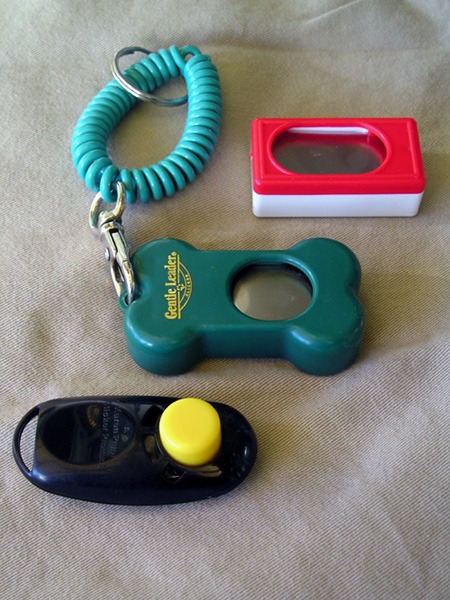
Clickers sound the same every time. Using a clicker is more precise than the “Yes.” Consistency will make your dog training go much faster.
No matter what you decide to use for your dog training, make the mark exactly when the behavior occurs. Before or after is confusing and will slow down Pug dog training.
Note: I started training my Pugs with a clicker but moved to the word “Yes” instead. I guess I’m not very coordinated. The treats, leashes, and clicker became too much for me. The clicker is more exact, but not if you’re someone like me. Saying “yes” was easier and effective enough that my Pugs could get what I wanted.
Also, I was watching a lot of dog training videos on youtube. Every time they heard that click on the youtube video, they were ready for their treat. It didn’t seem right to let them hear the click on the computer but not get the treat. It turned out to be too confusing for them.
#7. Target Training
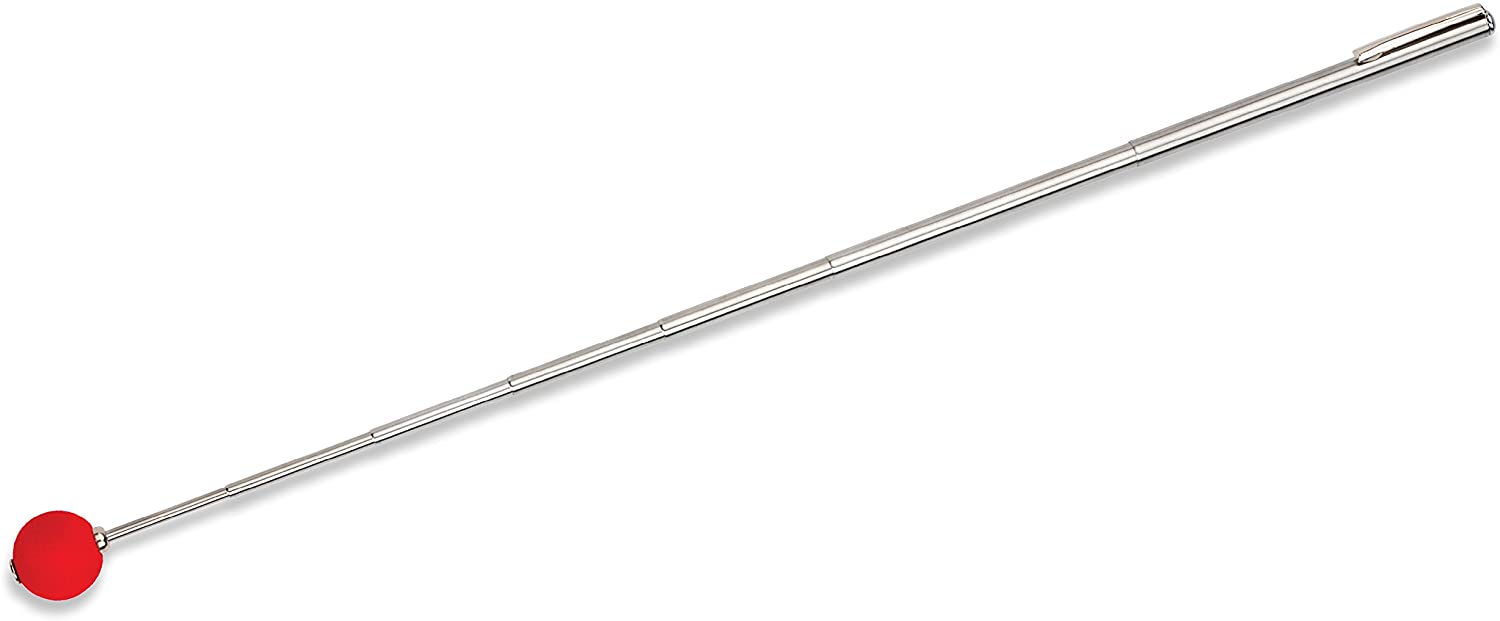
Target training is training your Pug dog to touch an object or a specific part of a person’s body. I find this a handy tool in dog training.
Teaching your dog to target is pretty straightforward. Pick the object and hold it ¼” in front of his nose. Once she looks at it or touches it with his nose, click and treat. Repeat this a few times until you feel like your dog is getting the hang of it.
Then move the object to the left of his nose. Click and treat once she touches it. Then to the right, then slightly higher than her nose, and then slightly lower. Each time she touches it, click and treat. As she becomes more consistent, move the target a little further away.
Then move the object to the left of his nose. Click and treat once she touches it. Then to the right, then slightly higher than her nose and then slightly lower. Each time she touches it, click and treat. As she becomes more consistent, move the target a little further away.
All the Useful Reasons to Train your Pug to Target
- Teach your Pug dog to target the nail clippers. This will reduce the stress the next time you need to clip.
- Have your Pug dog focus on the target if a scary dog comes by.
- Use the target as a distraction, so your Pug dog does not become overly aroused.
- It helps to keep your dog’s mind sharp. So, go ahead and train targeting to your Pug dog at any age.
- Targeting helps boost confidence.
- You can teach your dogs to ring a bell on your door when it is time to go out.
- With a little imagination, you can teach your Pug dog fun things like high fives!
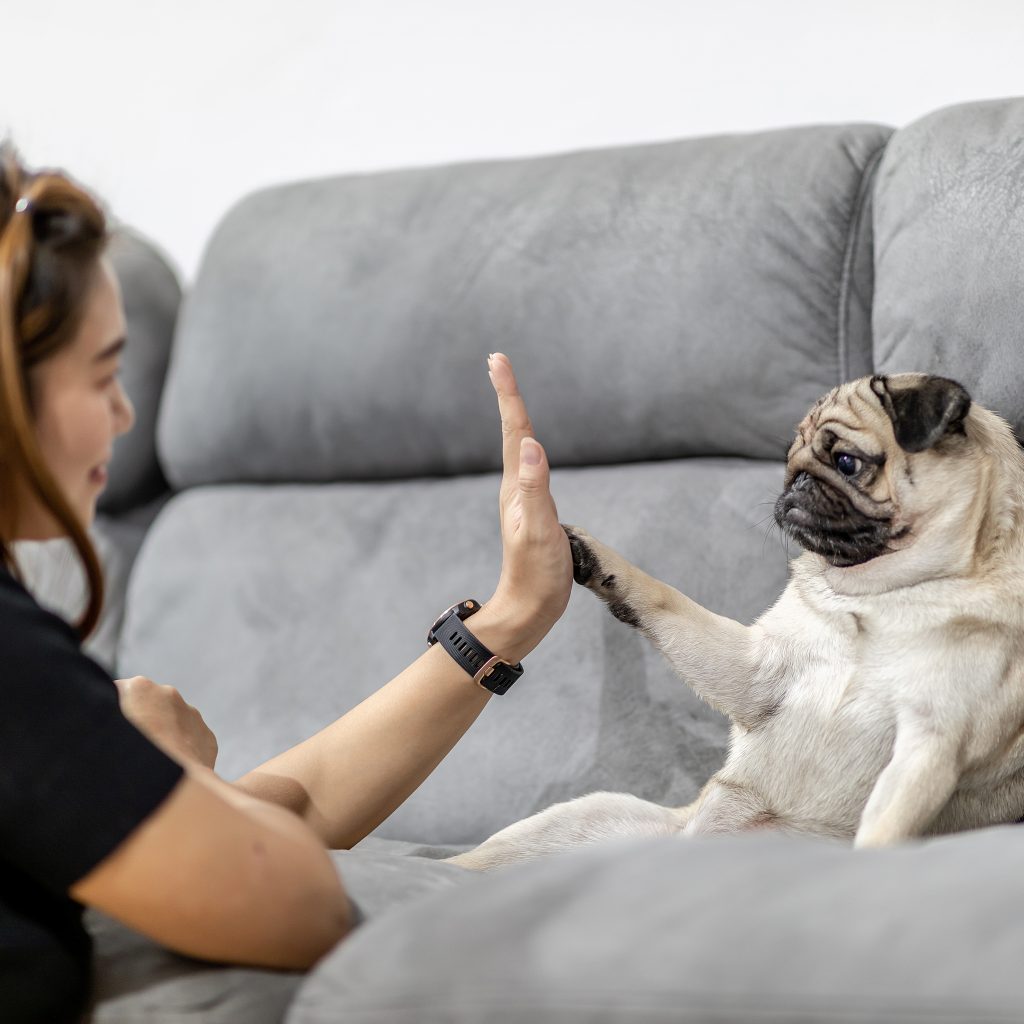
Dog Training Conclusion
These are some of the most useful terms that are a good starting place when you start your Pug dog training. There are many components to training a Pug.
It is not as simple as “click and reward,” and the next thing you know, your Pug dog has a blue ribbon around his neck.
If you decide to find a Pug trainer, it may be difficult. Trainers will tell you they’ve been training for over ten years. This doesn’t mean they know what they’re talking about.
Know training terms like shaping, correction, luring, extinction, generalizing, and targeting. This will help you understand what type of dog trainer you are talking to.
The more information you have on training, the easier it is to find someone who will be a good fit for your Pug.
Some trainers don’t like to use treats at all. Why not use something that’s going to work? Yes, you will need to phase out the treats once your Pug knows the trick. You need to use small, healthy training treats, so they don’t plump up with a few days of dog training.
Knowing these seven dog training terms is essential. You may want to find a trainer or training class. Or you may just start your Pug dog training on your own!
Cheers! And happy Pug dog training!

